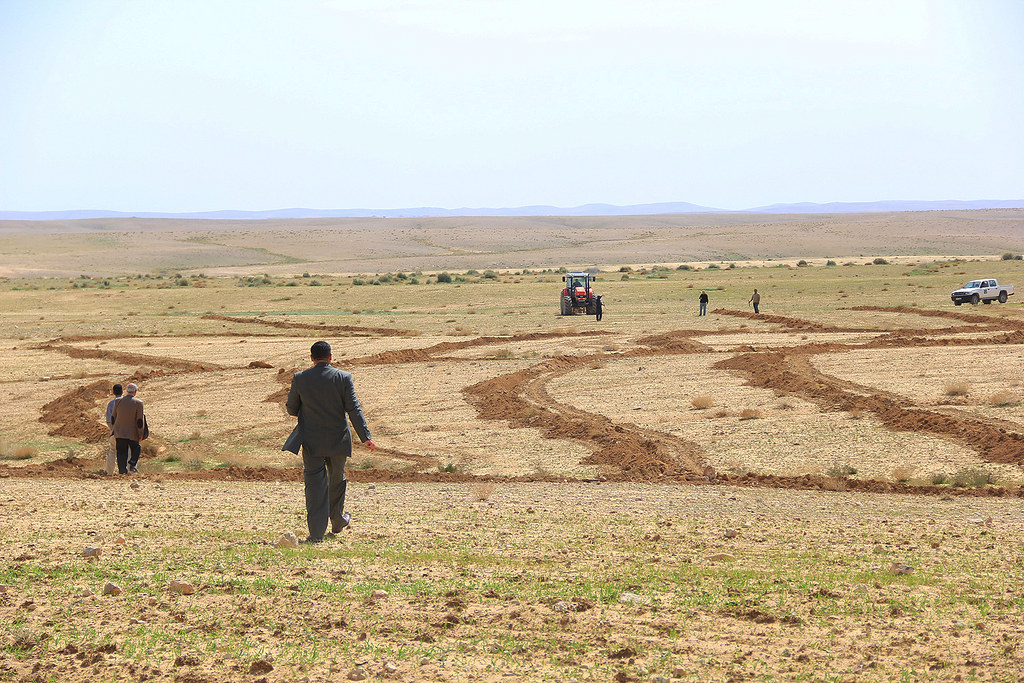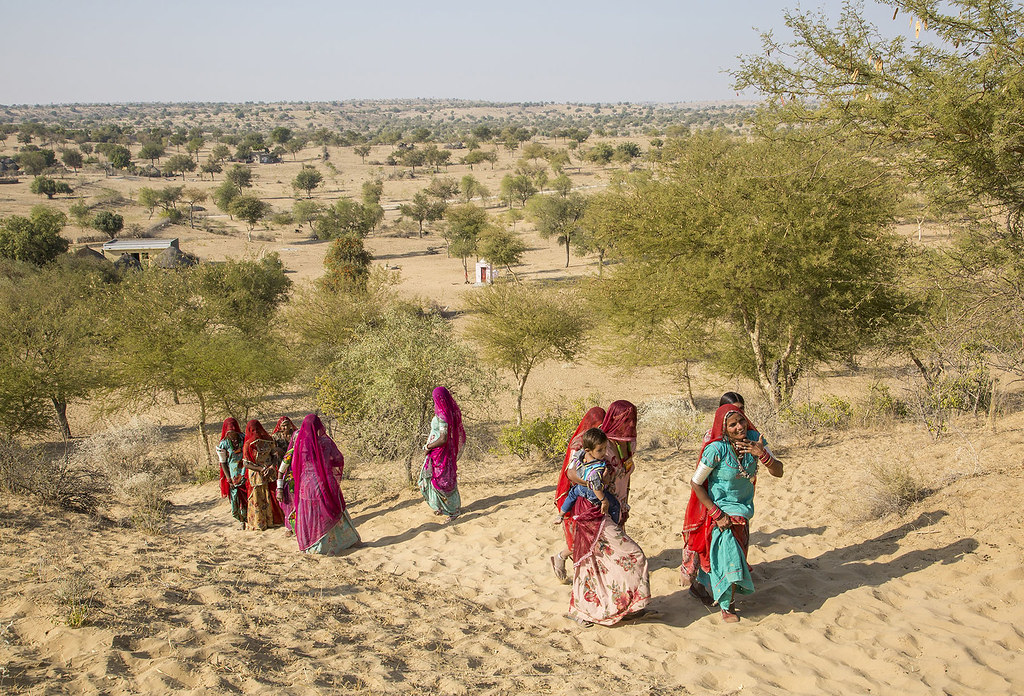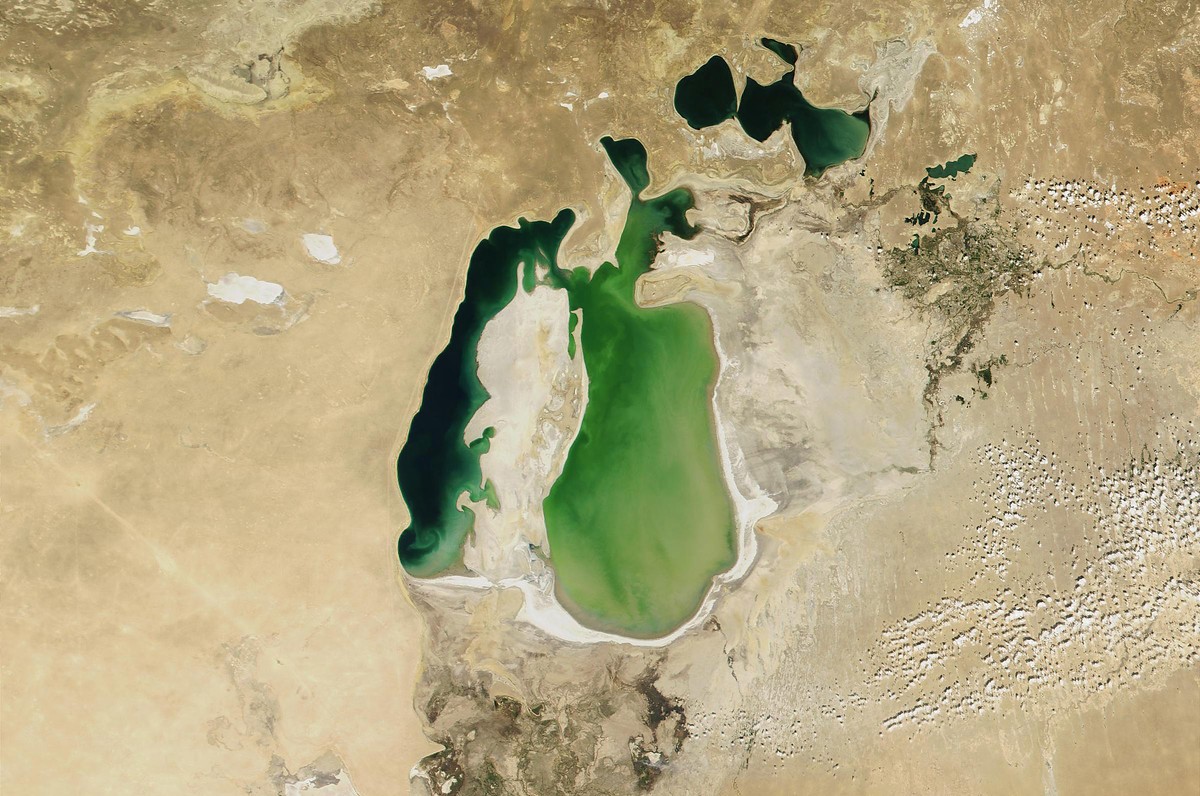Let’s do a thought experiment with some data visualization. Consider 2 billion hectares of land, an area in which two Chinas can easily be accommodated. It is hot and barren and of little use to the pastoralists or farmers or for that matter anyone else. Now consider 1.2 billion people or the entire population of India. Place them in those 2 billion hectares, facing the heat due to the degradation of the aforementioned landmass. That is the scale of the problem the globe is facing today. The cause? A process called desertification.
The first step is land degradation, and that means the fertility of the soil is lost along with water resources; at the same time, the aridity and salinity of the land increases taking a toll on the livelihood of people dependent on it. The next step is creeping desertification.

The process is slow, harmful, in one word: pernicious. It starts from the removal or loss of topsoil that leads to loss of vegetation, which in turn leads to increased aridity, salinity and subsequently loss of water. Degradation, desertification, and droughts are attributed to prolonged overgrazing, large scale deforestation, faulty irrigation and agriculture, excessive overuse of underground water, rampant urbanization as well as climate change and other weather phenomena.
On average, every year, world land surface loses 24 billion tons of fertile soil, 12 million hectares of land, an area equal to the African country of Benin. Biodiversity is seriously hit and 27000 bio-species are lost each year due to desertification according to a UNCCD report. The monetary cost is estimated at $45 billion annually.
Desertification also intensifies dust storms that ravage many parts of Africa’s Sahel region and Asia. Close to 151 countries face sand or dust storms and 45 countries are those from where these storms originate. While desertification has its own long list of economic impact, the additional sand and dust storms increase disease burden too. These storms aggravate asthma and are known to carry a large number of pathogens for a long distance. According to the global assessment of these storms, it has been found that 25 percent of the dust is generated due to human interference.

In a world where land resources are fixed and already under extreme pressures due to rising population, urbanization and growing needs for food and accommodation, loss of land due to desertification can severely hamper the global efforts to mitigate climate change and fight extreme poverty.
For a large majority of people, land is the only capital available to them along with their livestock. Desertification and loss of water resources leading to droughts deal a killer blow to both by making the land sterile and the livestock vulnerable to an early death. Migration in large numbers threatens social unrest in areas where these climate migrants end up. Almost all of them have no skills to live and thrive in urban settlements. This often leads to violent clashes, discrimination and in some cases permanent disenfranchisement.
However, there is a silver lining in the doom and gloom scenario.
The situation can be reversed and affirmative action has been initiated. Twenty-five years ago in 1994, the United Nations formed a Convention to Combat Desertification (UNCCD). It was a successful culmination of decisions taken during the Earth Summit held in Rio in 1992. This is the sole legally binding international treaty among nations to link environment and development with sustainable land management. The Convention, tasked to address the three pressing problems of land degradation, desertification and drought, has initiated many programs.
One of the most important initiatives has been in Africa’s Sahel region called the Great Green Wall. It’s an effort to create an 8000-kilometer long green belt to stop the spread of the Sahara desert. The plan aims to rehabilitate 100 million hectares of land that’s currently degraded and create 10 million jobs. The task is urgent because Africa is one of the worst-hit areas as far as desertification is concerned.

The UN estimates that in the next ten years, 375 million people would need jobs and 85 percent of the jobs will come from land, in the form of agriculture, animal husbandry, and forest management. But the problem is 60 percent of the land that can offer those jobs falls into a severely degraded category. Hence this gigantic green initiative has been undertaken. Ethiopia (14 million hectares) and Nigeria (5 million hectares) have already achieved success in rehabilitating degraded land while Sudan, Senegal, Burkina Faso, Mali, and Niger are also making determined efforts in that direction.
Since 2015, when the UN adopted the 2030 Agenda and the Sustainable Development Goals (SDGs), UNCCD has laid a special emphasis on its target 15.3: “By 2030, combat desertification, restore degraded land and soil, including land affected by desertification, drought and floods, and strive to achieve a land degradation-neutral world.”
Based on this guideline, UNCCD launched a massive program called Land Degradation Neutrality (LDN). The concept works on the principle of reclaiming all the degraded land possible within a country in a specific time period. Out of 197 members of Convention, 169 have declared that they are affected by desertification and 120 countries are already engaged in some form of large scale program to reclaim their degraded land.
The 14th Conference of the Convention that recently concluded in India saw the host committing to rehabilitate five million hectares of degraded land. However, when we look at statistics where 18 percent of the global human population (1.3 billion) and 20 percent of the livestock have to survive on just 2 percent of the global land and where 30 percent of the land is degraded, the commitment seems modest.
At a time when droughts are affecting even the most powerful country in the world and close to half of the global population lives in water-scarce areas, the advancing deserts and constantly shrinking good quality land presents a huge threat to the success of SDGs.
A landmass where the soil is fertile, water is available in reasonable quantity and enough biodiversity and wildlife are abundant is key to sustain a huge mass of population. Restoring degraded land can provide such oasis of hope. Rehabilitating them is a labor-intensive enterprise and who better than the pastoralists, farmers, forest dwellers themselves that can be employed to achieve this goal? They are the ones suffering most and will be the most willing and committed custodians of these initiatives.
EDITOR’S NOTE: The opinions expressed here by Impakter.com columnists are their own, not those of Impakter.com. Photo Credit: The Aral Sea stands out in green against the arid land of southwest Kazakhstan and northwest Uzbekistan in this true-color MODIS image.









